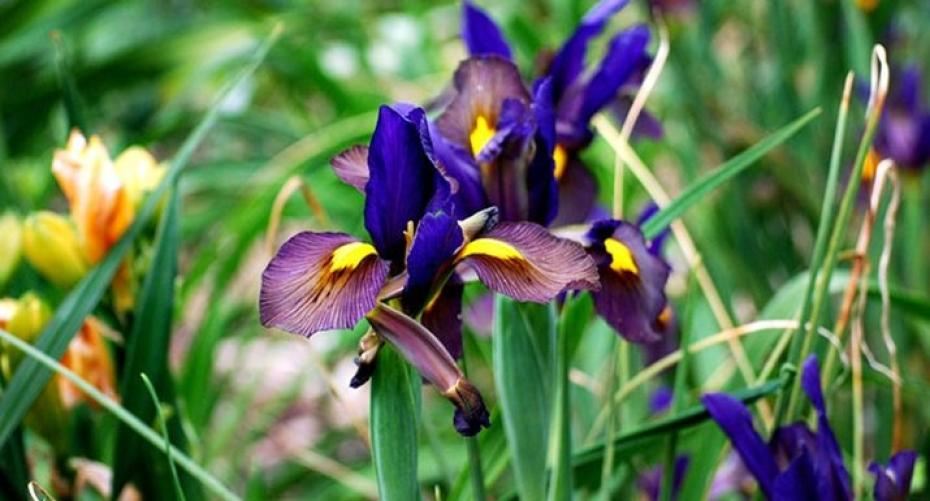Plant elegant iris for spring and early summer colour
Autumn is the time to plant the bulbous Iris for an early start to the spring flowering season; they range from the small dainty reticulata to the tall elegant Dutch iris. There are approximately 300 species, either rhizomes or bulbs, and are native to the northern temperate regions of Europe and Asia. The small bulbs, reticulata, danfordiae or histrioides are ideal for rockeries and usually flower fairly early in February/March. The Iris x hollandica, a hybrid of the Spanish iris, flowers a little later in summer and is ideal for adding height to a container or spring border. This Dutch iris has been out of fashion for several years but is now making a welcome return as a good long-lasting cut flower and for its tall elegant appearance. They are very easy to grow, once planted you can more or less forget about them.

Dutch iris
Position
They need fertile, well-drained soil in full sun; if water does not drain straight away after a rain shower then you need to find an alternative position. Rockeries are the ideal place for the small varieties.
Planting
Plant 10cm (4”) deep and 7.5cm (3”) apart. Water well after planting.
Aftercare
They require very little care, just make sure they receive adequate water during a dry spell. After flowering don’t remove the foliage, allow it to die down naturally as it needs to build the bulb for the next season. Don’t water them when they are dormant, after the foliage has died down.
Pests and diseases
They are relatively pest and disease free, but can occasionally succumb to the following:
Ink disease (Bipolaris iridis); a fungal disease which caused black patches on the leaves and then the bulbs. In severe cases the leaves will go yellow and wither and the bulb rot. Destroy all infected plants, don’t compost as this will just spread the disease. Don’t plant the area with iris again for several years.
Rust (Puccinia iridis); it is a fungal disease which is characterised by orange/brown spots on the leaves which eventually turn black. Take off infected leaves as soon as you spot the first signs.
Rots; dispose of any plants and don’t replant the area with iris for several years.
Viruses; these are characterised by irregular mottling on the leaves, again dispose of the infected plants.
Non-chemical remedies; be vigilant and take off any infected material and burn.
Chemical remedies; there are several fungicides on the market which will halt the spread if they are used soon enough.

Recommended varieties:
Danfordiae, histrioides and reticulate are all suitable for shallow containers, rockeries or the tops of walls as they only grow to a height of approximately 15cm (6”). They come in yellow, shades of blue and a dark blue/violet.
Dutch iris are most commonly available in blue, white and yellow but there are several bi-colours: bronze/orange; blue/burgundy; yellow/white.


